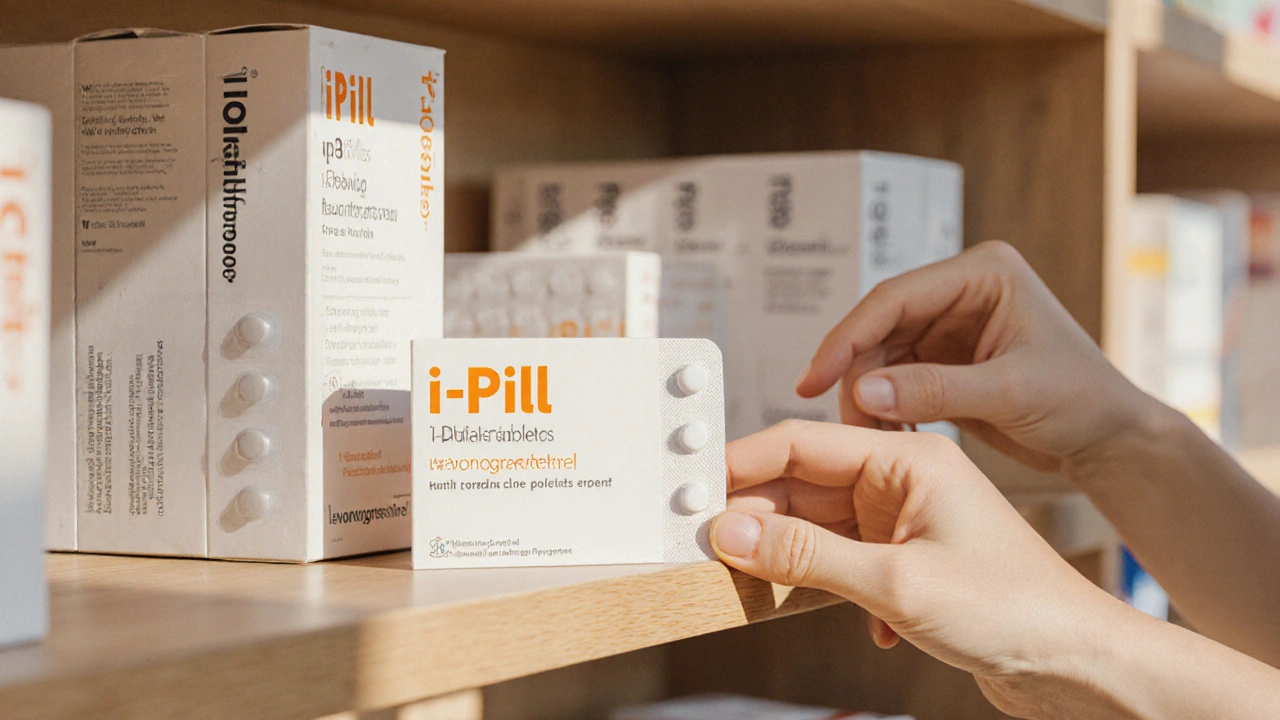Emergency contraception – your quick guide to backup birth control
When working with Emergency contraception, a short‑acting method used after unprotected intercourse to prevent pregnancy. Also known as morning‑after pill, it offers a safety net when regular contraception fails or isn’t used.
One of the biggest questions is how fast you need to act. The rule of thumb is: the sooner, the better. Levonorgestrel, a synthetic progestin found in many over‑the‑counter pills works best within 72 hours, cutting pregnancy risk by up to 85 %. If you’re past that window, Ulipristal acetate, a selective progesterone receptor modulator that stays effective up to 120 hours is the go‑to choice, maintaining high efficacy even at the five‑day mark. For those who want the most reliable, long‑lasting backup, a Copper IUD, a non‑hormonal device that can be inserted within five days and provides emergency protection plus ongoing contraception is unmatched – it prevents more than 99 % of pregnancies and lasts up to a decade.
These three options don’t exist in a vacuum. Their effectiveness depends on body weight, timing, and the menstrual cycle phase. Levonorgestrel’s performance can dip for people over 80 kg, while ulipristal acetate remains fairly stable across a broader weight range. The copper IUD, meanwhile, bypasses hormonal considerations entirely but requires a clinician’s insertion, which may pose a logistical hurdle. Understanding these nuances helps you pick the right method for your situation. The articles below dive deeper into dosage tips, side‑effect profiles, cost comparisons, and real‑world experiences so you can make an informed choice without second‑guessing.
Key considerations when choosing emergency contraception
First, think about accessibility. Levonorgestrel is available without a prescription in most pharmacies, making it the most convenient option for many. Ulipristal acetate usually needs a prescription, but some regions have online services that streamline the process. Copper IUD insertion demands a clinic visit, but many health centers offer same‑day placement for emergencies. Second, weigh side‑effects. Levonorgestrel can cause mild nausea or spotting; ulipristal may lead to fatigue or headache; the copper IUD might cause heavier periods or cramping initially. Third, factor in cost. Generic levonorgestrel pills are often the cheapest, while ulipristal and copper IUDs carry higher upfront costs but can be more cost‑effective over time if you need ongoing birth control.
Beyond the basics, it’s worth noting how emergency contraception interacts with other meds. Certain antibiotics, anticonvulsants, or herbal supplements can lower the efficacy of levonorgestrel and ulipristal acetate, so a quick check with a pharmacist is wise. The copper IUD isn’t affected by drug interactions, but you should discuss any existing infections or uterine abnormalities before insertion. Our collection of posts also covers related topics like drug‑drug comparisons, safety tips for buying generic meds online, and how family support can improve overall reproductive health. All this information is aimed at empowering you to act confidently, whether you’re dealing with a missed pill, a condom break, or simply want an extra layer of protection.
Ready to explore the details? Below you’ll find practical guides on each emergency contraception method, side‑effect management, price‑shopping tricks, and real‑life success stories. Use them to decide which option fits your lifestyle, budget, and health needs the best.
 13 Oct 2025
13 Oct 2025
A clear, 2025‑updated guide comparing the I‑Pill (levonorgestrel) with ulipristal, copper IUD, Yuzpe method and more, helping you pick the right emergency contraception.
View More

